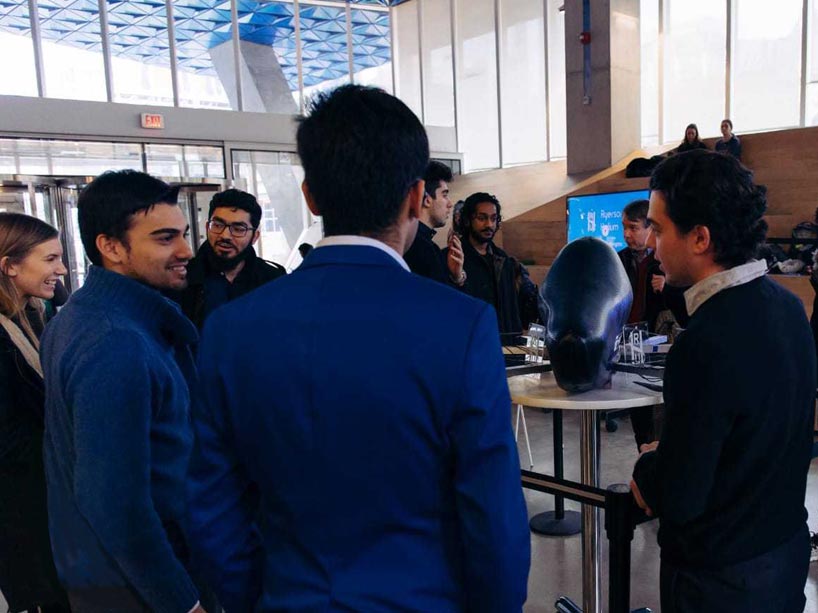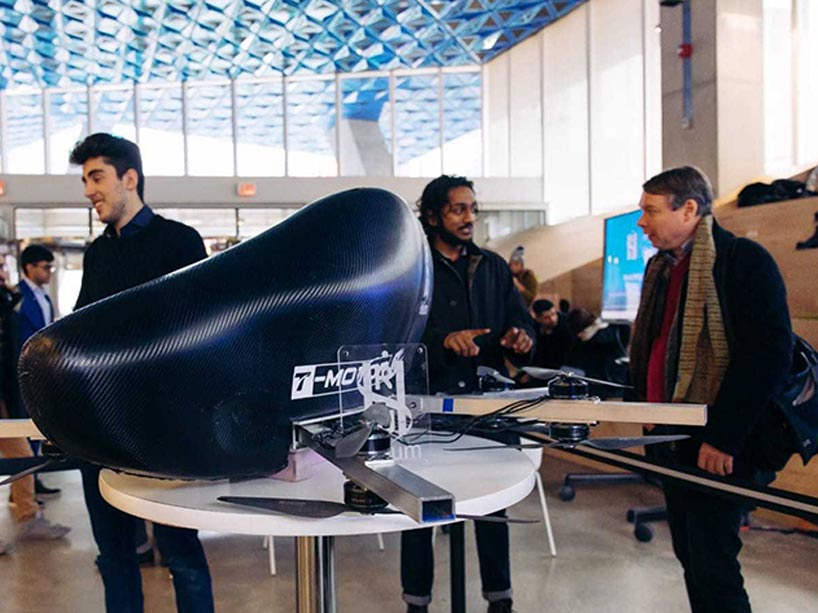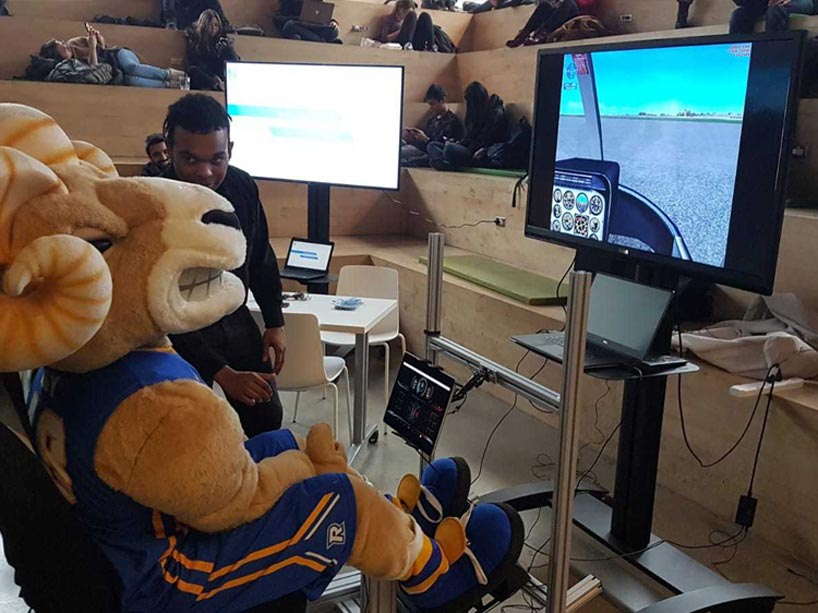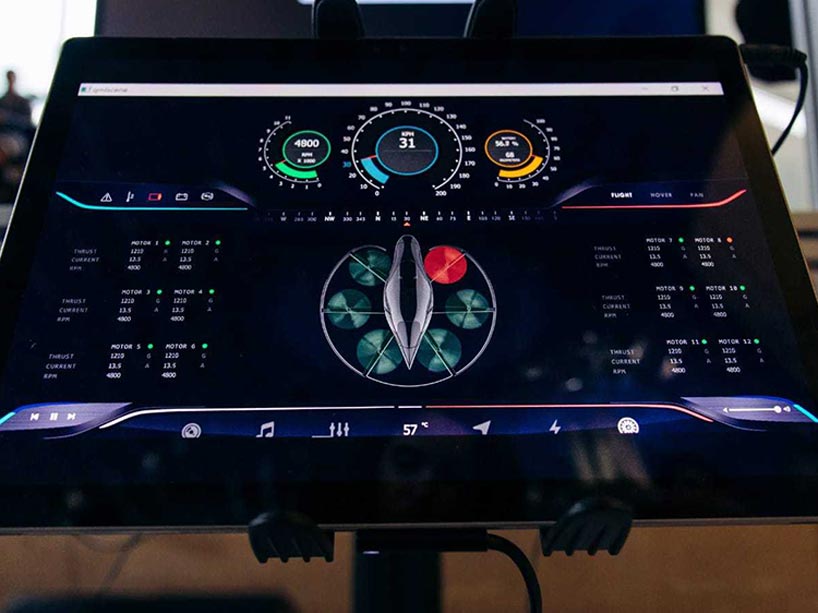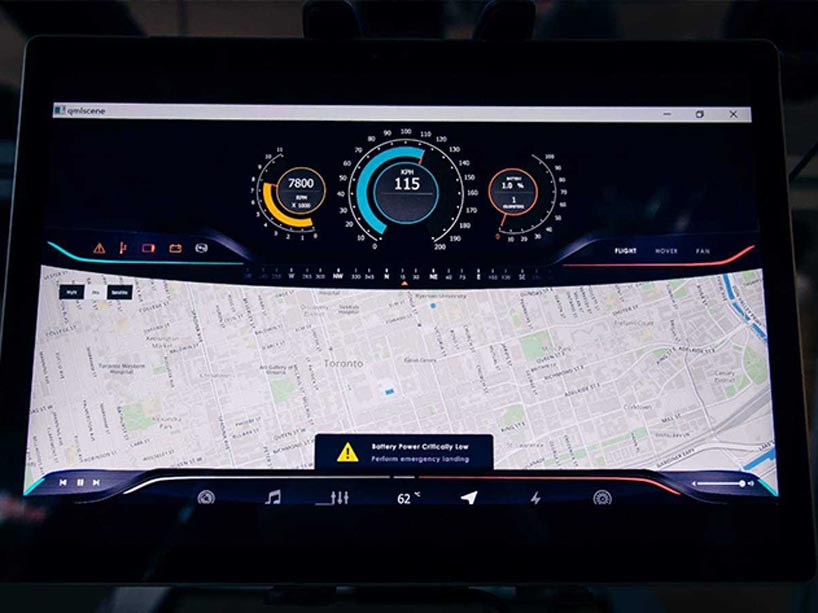Innovation takes flight with Ryerson Helium
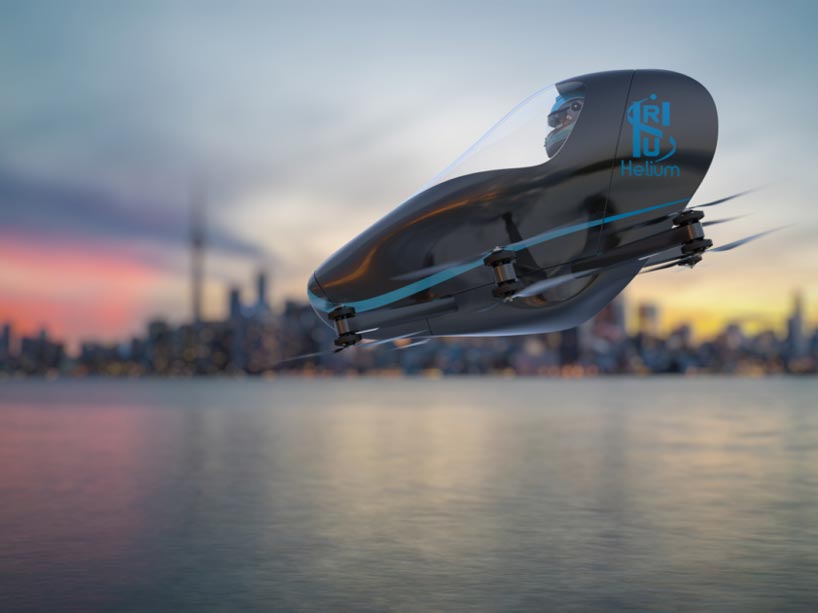
The Ryerson Helium team has been working together for more than a year to create a VTOL (vertical take off and landing vehicle) for the GoFly challenge. Photo: Conceptual rendering by Ryerson Helium.
Instead of hopping into your car and getting stuck in traffic, imagine powering up your own personal aircraft and flying right over it.
This is the vision of Ryerson Helium (external link) , a team of 30+ students who have been working together since January 2018 to design and build a VTOL (vertical take-off and landing) Personal Aerial Vehicle.
The vehicle is the team’s entry in the GoFly (external link) challenge, an international Boeing-sponsored competition, which will award $2 million in prizes to the winning personal flying devices.
“It’s been a great help to have Ryerson and the Design Fabrication Zone on our side. We don’t think we would have been able to do this anywhere else,” said Amin Ismail, mechanical engineering student and operations lead for the team. “The DFZ has offered us resources, space to build, as well as a lot of mentorship and guidance. We’ve been able to talk to them about whatever we need.”
The team has also had a range of support from other areas. The Qt Company provided the team with the same software tools used by Tesla, so the team could create a unique dashboard for the Helium vehicle. Other corporate partnerships provide the team with software licenses in exchange for logo representation on their vehicle.
“Dr. Seyed Hashemi, aerospace professor, Dr. Filippo Salustri, associate chair of the mechanical department, and Dr. Paul Walsh, aerospace chair, have all been really supportive of us from the beginning,” said team lead Kevin Kasa, an aerospace engineering student. “When the project first kicked off, we approached Dr. Hashemi, and from day one he supported us. And when you think about it, we’re a bunch of second years, what do we know, but he was like, ‘Yes, go ahead, I’m confident you guys will succeed.’ And we probably wouldn’t have done it without that support, so it was very important.”
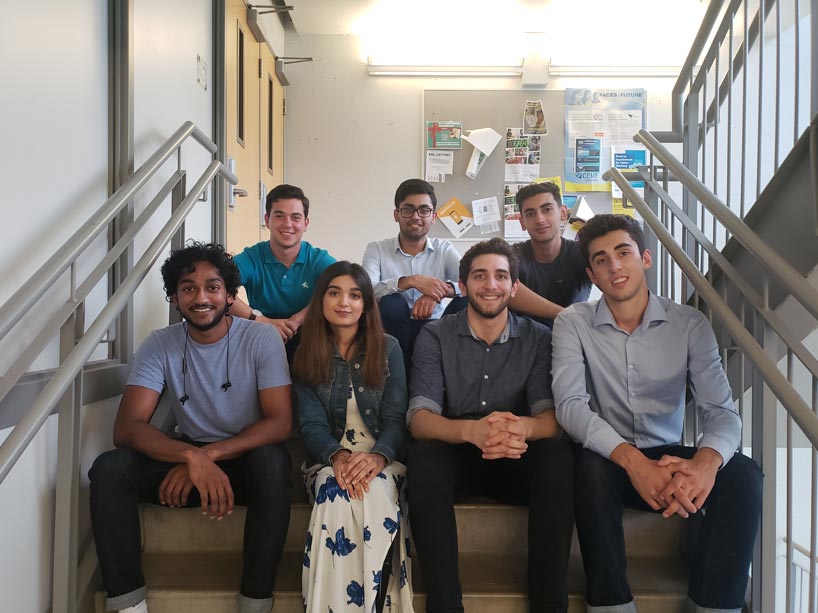
Leaders of the seven Ryerson Helium sub-teams: (back row, from left) Lior Saprikin (marketing and outreach lead), Danyal Chaudhry (guidance, navigation and control lead), Hani Hakeem (user experience co-lead); (front, from left) Sai Sanketh Poosarla (power lead), Aleeza Hashmi (guidance, navigation and control specialist), Amin Ismail (operations lead), Kevin Kasa (overall team lead). Photo: Ryerson Helium.
Lior Saprikin, aerospace engineering student and marketing and outreach lead for the team, agrees.
“It’s been hard for us, we’ve had many challenges, but we’ve been able to go to faculty members and ask them for mentorship, space, advice, and they’re so open to it. They love seeing that students can apply what they’re teaching in class,” said Saprikin. “I think Ryerson is the best school to really support innovation.”
The team is divided into five design sub-teams – structure, propulsion, power sub, user experience, and guidance, navigation and control – and two non-design teams, outreach and business planning, with a special focus on safety and the experience of the user, including music selection and comfortable, ergonomic seating.
“We want to make something that people actually want to get into,” said Ismail.
The innovative spirit of Ryerson Helium extends to its interdisciplinary approach. Five of the seven faculties at Ryerson are represented on the team, with members from the Faculty of Engineering and Architectural Science (FEAS), Faculty of Communication and Design (FCAD), Faculty of Science, Ted Rogers School of Management, and graduate students participating.
“That’s one of the things we love the most and we try to emphasize as much as possible. Collaboration and diversity with the different faculties and groups within Ryerson,” said Kasa. “We try to align the work with what they’re good at, what they like doing and what they think will benefit them in the future in terms of their academic career and personal growth.”
On January 15, Ryerson Helium unveiled a half-scale model of their vehicle at the Student Learning Centre, where students, faculty – and Eggy, the Ryerson Rams mascot – got a chance to try their flight simulator and get a look at the unique dashboards and other features they’ve created. Photos: Ryerson Helium.
The GoFly competition requires entries to be safe, quiet, ultra-compact, user-friendly and capable of carrying a single person for a distance of 20 miles without refuelling or recharging. The Ryerson Helium design fulfills all these requirements, and after a year of hard work, the team unveiled their half-scale model to a mesmerized crowd at the Student Learning Centre on January 15.
“During the event, a number of professors told us that, ‘Even if you guys stop now, you should be very proud of your accomplishments, it’s been an incredible learning experience for all of you’,” recalled Kasa, “And it has. Even if operations were to stop today, the whole experience would influence our future careers.”
“I think every member would be proud of their work,” said Saprikin. “We’ve been able to apply a lot of the knowledge we learned in class and, additionally, learn things that will never be taught in a classroom.”
The final GoFly “Fly-off” will take place on the U.S. West Coast early in 2020 and, to prepare, the Ryerson Helium team is now working on building the full-size vehicle, which they’ll test in September – by flying it.
“From the days of early science fiction, people have thought about having a flying car, but it was never possible,” said Saprikin. “And now, maybe, we’re approaching that.”
To learn more, visit the Ryerson Helium website (external link) , and to apply to join the team, email them at helium@ress.ca visit their LinkedIn page (external link) .
